Easy, Tasty Grilled Foods for Dinner Tonight

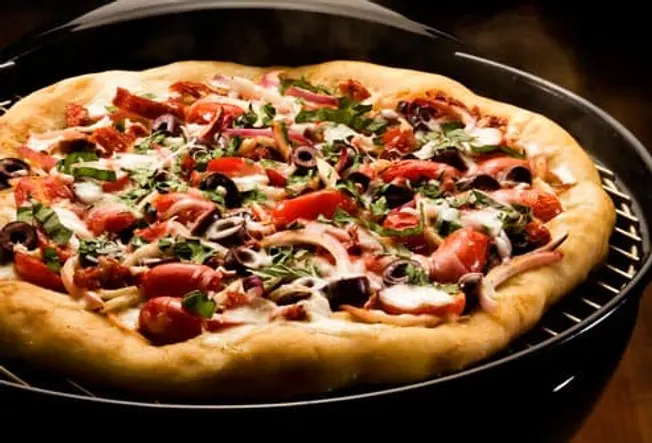
Put a Pizza on the Grill
The grill's intense heat is a lot like a restaurant pizza oven. Keep all your toppings light and cook them beforehand so they heat evenly on the grill. Lightly brush the crust with oil and sear both sides on the grill. Next, add the toppings and cover the grill. Cook about 3-7 minutes. Every minute, rotate the pizza 90 degrees to prevent burning. Whole-wheat crusts are healthier -- some recipes are specially made for grilling.
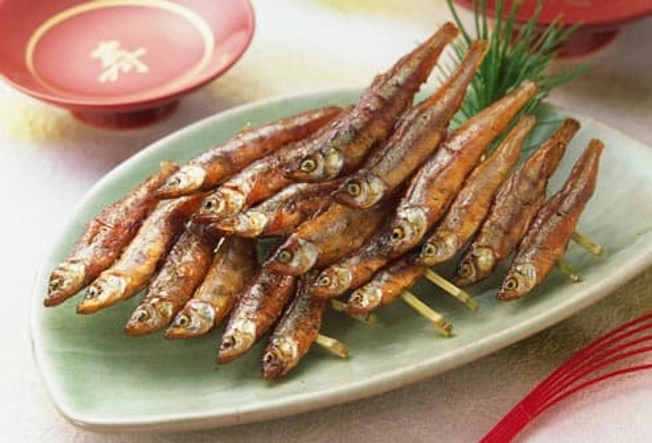
Skewered Fish
Skewers are great for cooking whole small fish like fresh sardines, which are loaded with heart-healthy fats. You can easily grill several fish at once. Insert one skewer through each fish near the base of the head. Insert a second skewer near the tail. That holds the fish firmly in place, so they're easy to turn. Brush them and the rack lightly with olive oil and cook the fish, turning once, just until they flake easily.
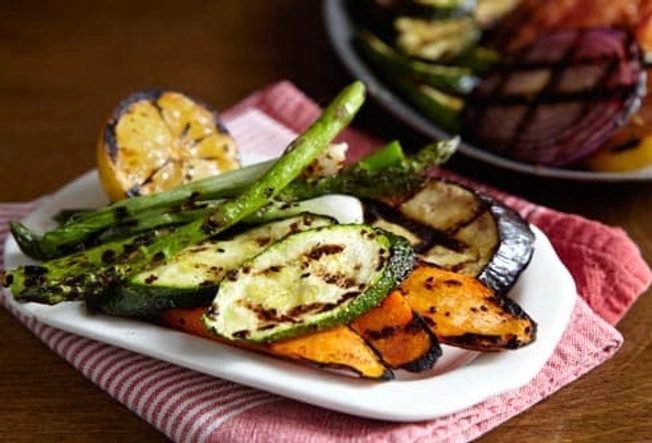
Grill-Worthy Veggies
Grilling is a great way to cook vegetables. High temperatures and quick cooking times help preserve their nutrients. Slice them thinly or in chunks for kebabs. The best veggies for the grill are sturdy and develop sweet flavors:
- Sweet peppers (6-8 minutes each side)
- Onions (5-7 minutes each side)
- Zucchini and other summer squash (5 minutes each side)
- Corn (25 minutes)
- Portabella mushrooms (7-10 minutes per side)
- Romaine lettuce hearts (3 minutes per side)
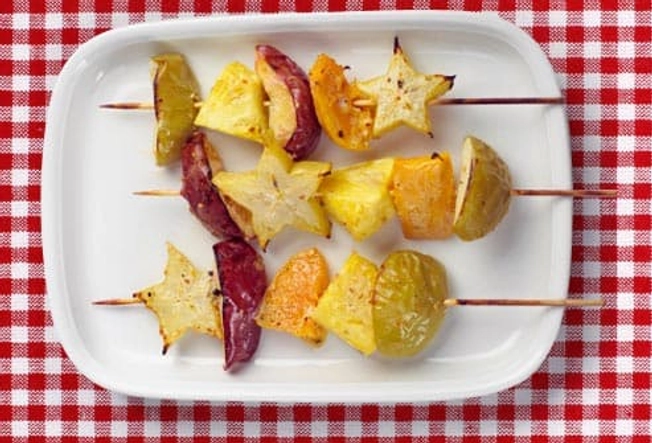
Grill Fruit for a Delicious Dessert
Grilling intensifies the sweetness of strawberries, peaches, pineapples, bananas, apples, pears, and other fruit. Cut fruit into pieces and spear them on skewers. Or wrap the pieces in foil. The trick is to cook with indirect heat. Turn down the gas or place the fruit on the edges of the grate. Cook the fruit only for a few minutes. Grill on low heat until it is hot and slightly golden.
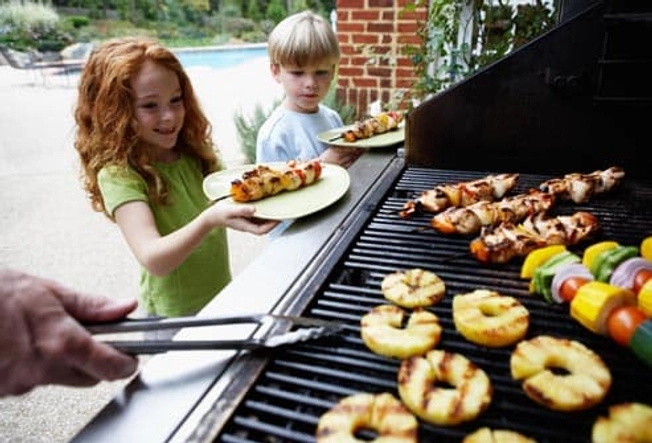
Kebabs for Kids
Kebabs make fun finger food out of any meal, even dessert. Kids love the idea of food on a stick, so let them build their own. For safety, grill meat or fish, vegetables, and fruits on separate skewers. Bite-size chunks of tomatoes, zucchini, peppers, mushrooms, and onions are a good veggie combination.
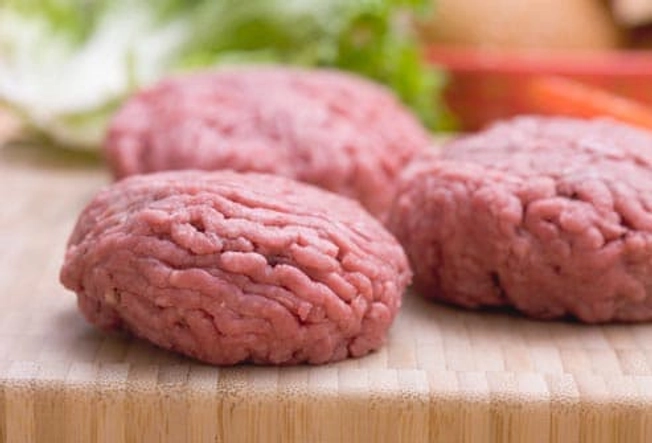
Better Burgers
Thinner burgers are healthier burgers because they cook faster. Grill 1/2- to 3/4-inch patties over medium heat. They'll stay juicy if you don't smash them on the grill with a spatula, which forces the juices out. Add some chopped bell pepper, carrot, onion, or barbecue sauce for a juicier turkey burger. Prepared veggie burgers may crumble less than homemade ones. Other meatless meaties: juicy portabella mushrooms and marinated tofu.

Fish That Can Take the Heat
Salmon is almost a grilling tradition -- it cooks well on the grill because its oils keep it moist and help prevent sticking. For medium-rare fillets, cook them about 4 minutes on each side. Besides salmon, the best fish to grill are ones that can be cut thickly and cooked with the skin. Consider halibut, tuna, trout, and swordfish. A well oiled grill can help prevent sticking.

Slimmed-Down Dogs
Hot dogs and sausages can be a guilty pleasure. When you occasionally indulge, look for ones with 2 to 6 grams of fat, or made from chicken, turkey, or veggies. Serve dogs on a whole wheat bun with these tasty, healthy toppings:
- Diced avocado, red onion, and alfalfa sprouts
- Diced tomatoes, thinly sliced scallions, and jalapeños
- Shredded carrot, cilantro leaves, thinly sliced cucumber, and a squeeze of lime
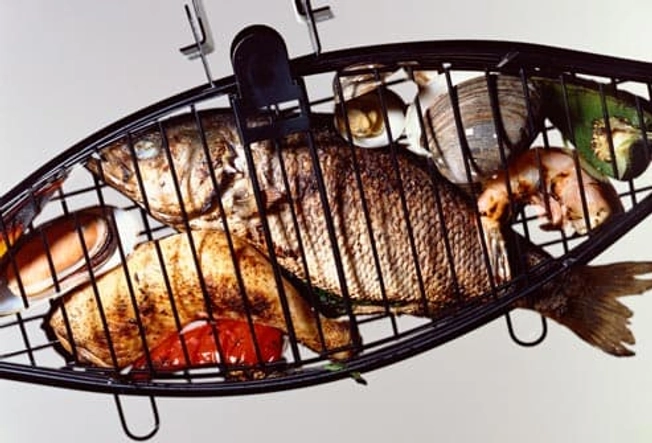
Tasty Ways to Grill Delicate Foods
You can grill small foods like eggplant slices, mushrooms, or flaky fish in a hinged grilling basket or foil packet, which holds the food firmly and is easy to turn over. Or choose a plank: Grilling small or delicate morsels on a wooden plank keeps them from falling apart (or through the grates). And it also infuses a light, smoky woodiness to foods, from prawns to figs. Follow instructions that come with your plank for pre-soaking and heating.
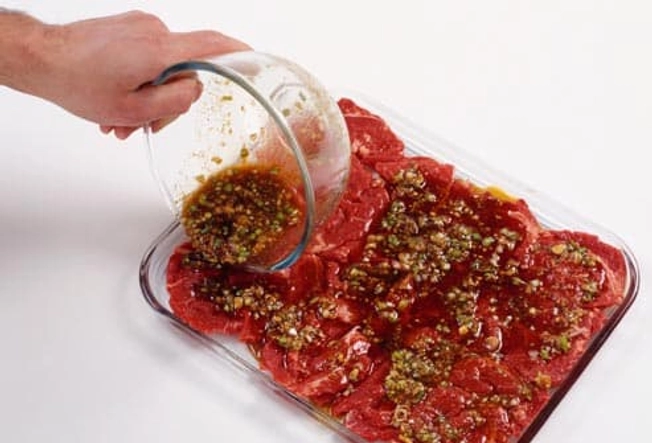
Try a Little Tenderness
Foods like flank steak were made for marinade. Marinating adds flavor and helps tenderize lean meats, so you get top-notch flavor without the high price and fat. And marinating meats before grilling may reduce the cancer risks of heterocyclic amines (HCAs). Marinade recipes may include soy sauce, brown sugar, honey, olive oil, garlic, spices, wine, vinegar, or citrus juices. Make sure to reserve some of the marinade for basting later. Then use the rest to marinate the meat in the refrigerator. Drain the meat before grilling.
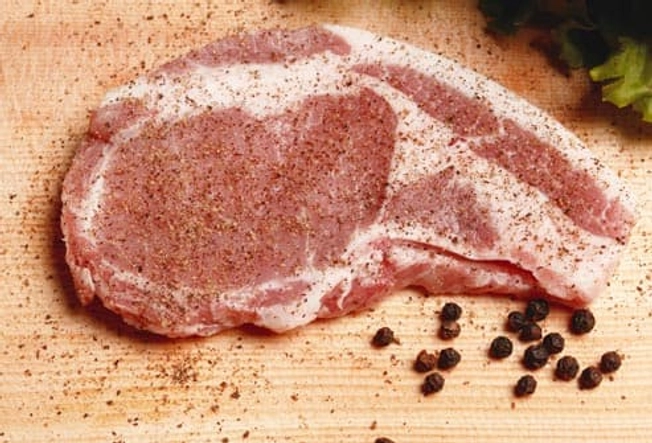
The Rub on Dry Rubs
Dry rubs are a mouth-watering alternative to heavy sauces. They pack lots of flavor for few calories. You can pat them on food just before grilling. Buy a low-sodium rub with less than 5 grams of sugar per serving. Or make your own custom rub. Try these for salmon or steak: paprika, pepper, and chili powder; or chili peppers, garlic, and cilantro. For chicken or white fish: oregano, thyme, pepper, coriander, and garlic or onion.
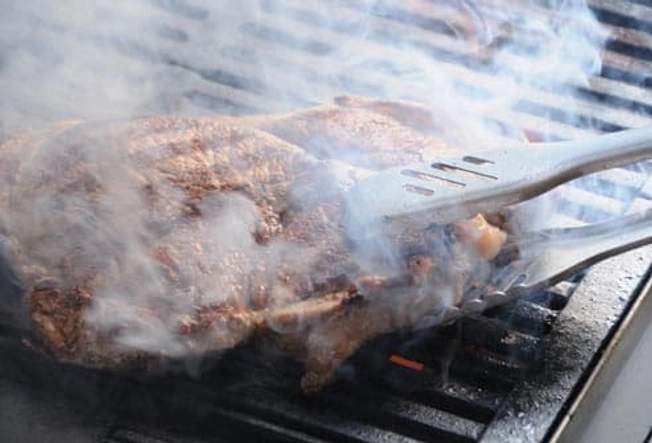
Slow and Smoky Secrets
Where there's rich, aromatic smoke, there's tasty, succulent meat. Smoking -- which is slow-cooking with indirect heat -- is often preferred for large cuts like briskets and pork loin, and whole turkeys or chickens.
Use a covered grill if you don't have a smoker. Put a pan of water under the grate between two piles of coals. Center the food over the pan. For the best smoke flavor, use beech, oak, hickory, apple, or maple wood.
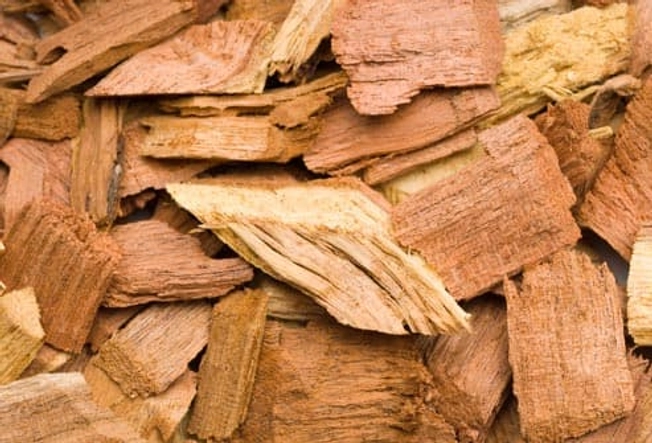
Wood-Fired Flavor
To add interesting new flavors into grilled foods, use mesquite or hickory chips in your grill. Other hardwoods that add a unique taste include pecan, oak, maple, and apple wood. Soak the chips in water, wine, or apple juice for an hour. Put them on top of the coals, or for gas grills, wrap them in a foil pouch and punch several small holes in it. Put it beneath the gas grill grate or near the flame of a propane grill or on its grate.
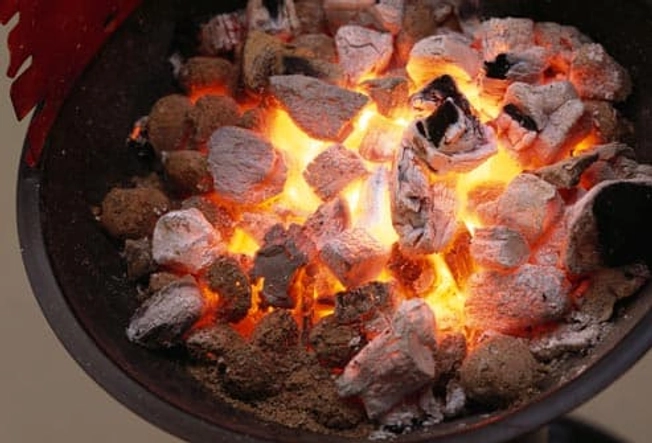
Cutting Cancer Risks From HCAs
Some ways of grilling meat can give rise to HCAs, which are believed to cause cancer. HCAs tend to form the longer meat cooks on the grill and when it gets charred or exposed to smoke from fat dripping on the coals. Grilling seafood, vegetables, or fruits doesn't create substantial HCAs. For healthier meat and poultry grilling:
- Cook small, lean pieces of meat, which take less time on the grill and produce less smoke from dripping fat.
- If you use a charcoal grill, center the food on the grate but push the coals to one side.
- Remove visible fat to prevent flare-ups.
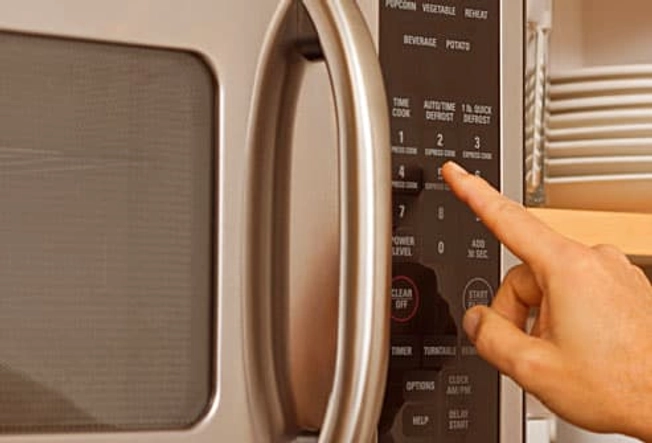
Precook for Quicker Grilling
Partially cooking meat in the oven, microwave, or on the stove can reduce grilling time and HCAs. Microwaving meat for 2 minutes before grilling releases some of its juices. Some research suggests that if you throw away those juices after microwaving, you may reduce 90% of HCAs. A hot tip: Always grill foods on a preheated grill immediately after precooking to prevent harmful bacteria from forming.
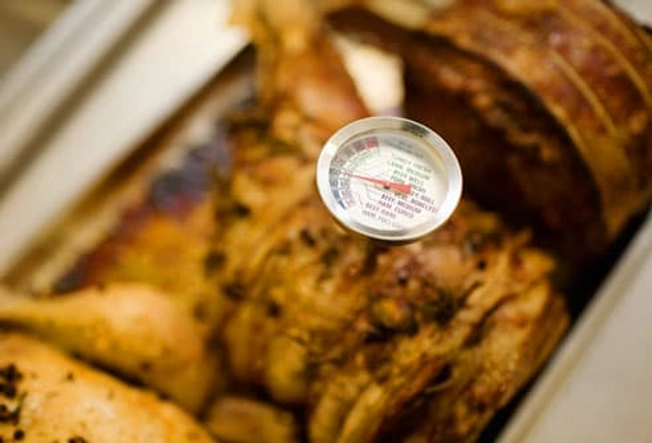
For Perfectly Cooked Foods, Use a Thermometer
Even the most expert griller can't tell when food is done just by looking at it -- or even cutting into it. A meat thermometer gives the best reading, so you won't be stuck with dried out, overcooked meats. You can take foods off the grill when they reach these internal temperatures:
- Poultry 165°
- Beef, pork, lamb, and veal (steaks, roasts, and chops) 145°
- Ground beef, pork, lamb, and veal 160°

Better Barbecue Side Dishes
Traditional pasta and potato salads can be loaded with calories and carbs. These tasty substitutions won't leave you feeling deprived:
- Instead of a baked potato with toppings, eat grilled sweet potatoes.
- Instead of potato salad, eat coleslaw with light dressing.
- Instead of iceberg lettuce with ranch dressing, eat sliced tomatoes and avocado drizzled with olive oil and vinegar.
- Instead of pasta salad, eat a whole grain medley salad with beans or quinoa.
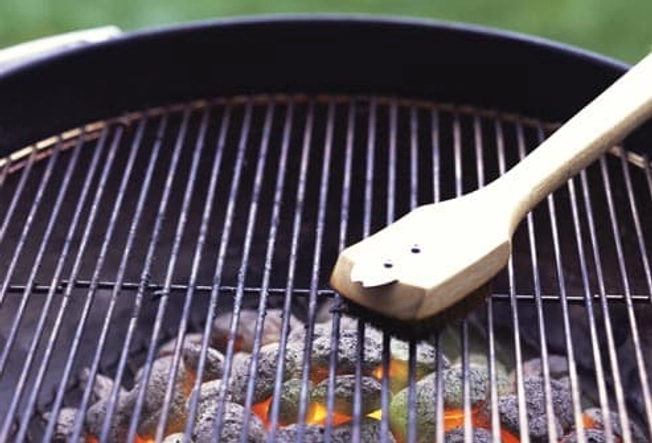
No-Stick Grilling
To prevent food from sticking to the grill, clean the grates thoroughly with a wire brush and hot, soapy water before cooking. It may be easier to remove leftover grease by preheating the grill. Once the grate is clean, let it heat up completely before cooking -- 20 to 30 minutes for a gas grill. Preheat a charcoal grill about as long, until the coals are lightly coated with ash.
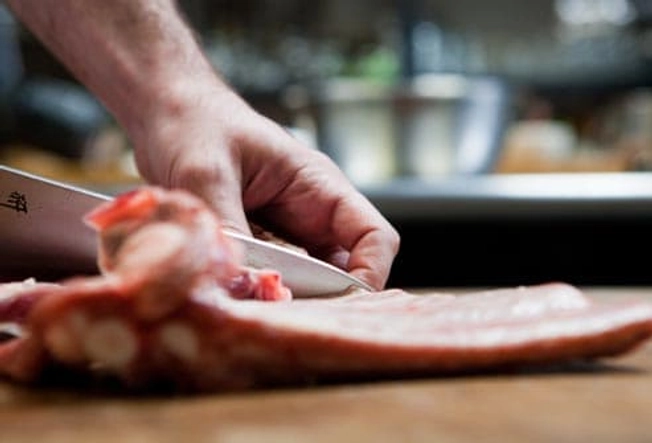
Safe Food Etiquette
Follow these four tips for safe grilling:
- Keep all food on ice or refrigerated until it reaches the grill.
- Wash your hands and all your cooking utensils in warm, soapy water before you start to cook.
- Put cooked food on a clean platter, not the one you used for the raw food.
- Cook foods thoroughly. Don't partially grill foods to finish cooking later.
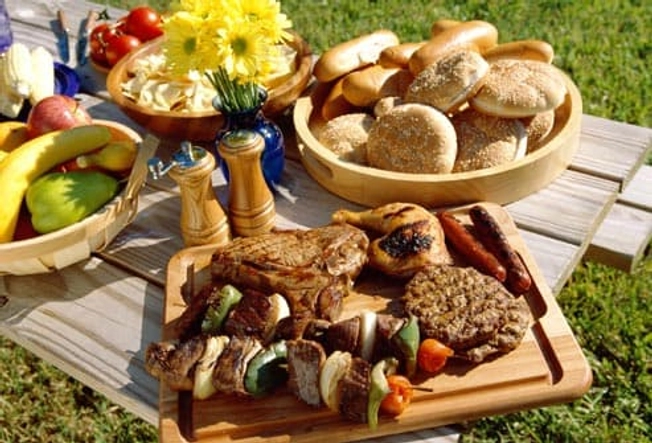
Give It a Rest
After you remove meat or poultry from the grill, let it sit for 5 minutes. The juices will settle as the temperature evens out. Because resting prevents the juices from leaking out, the meat will be more moist and tender.